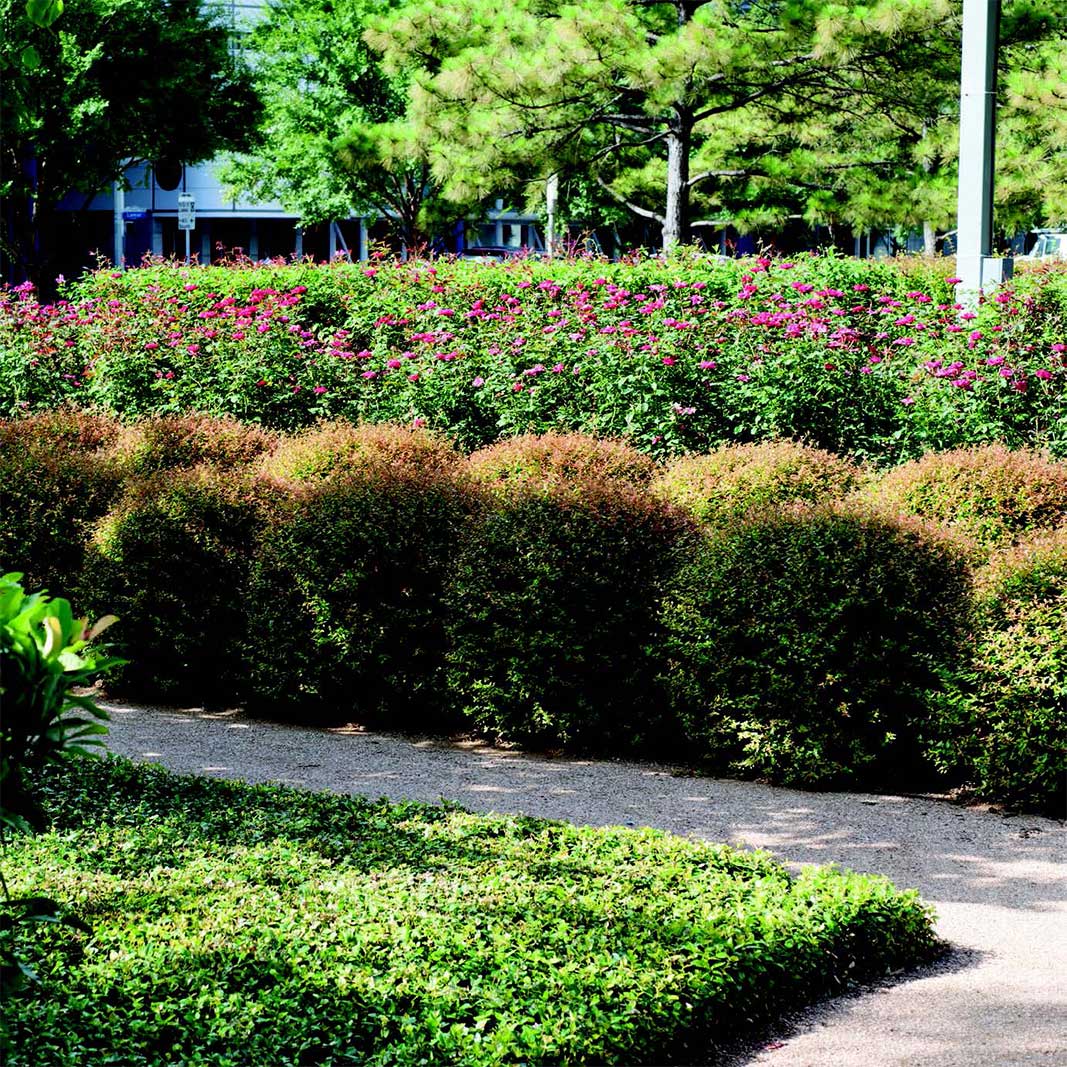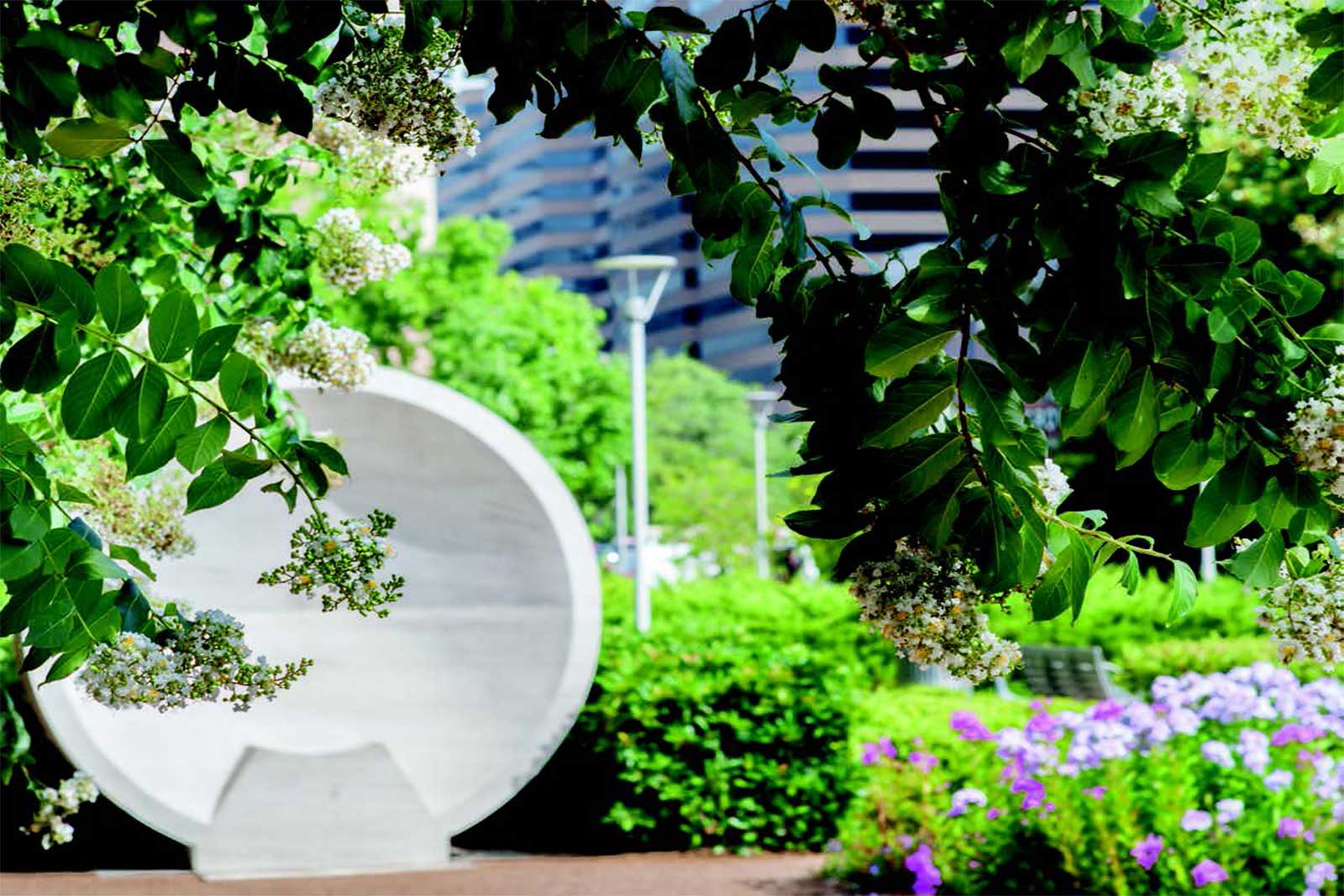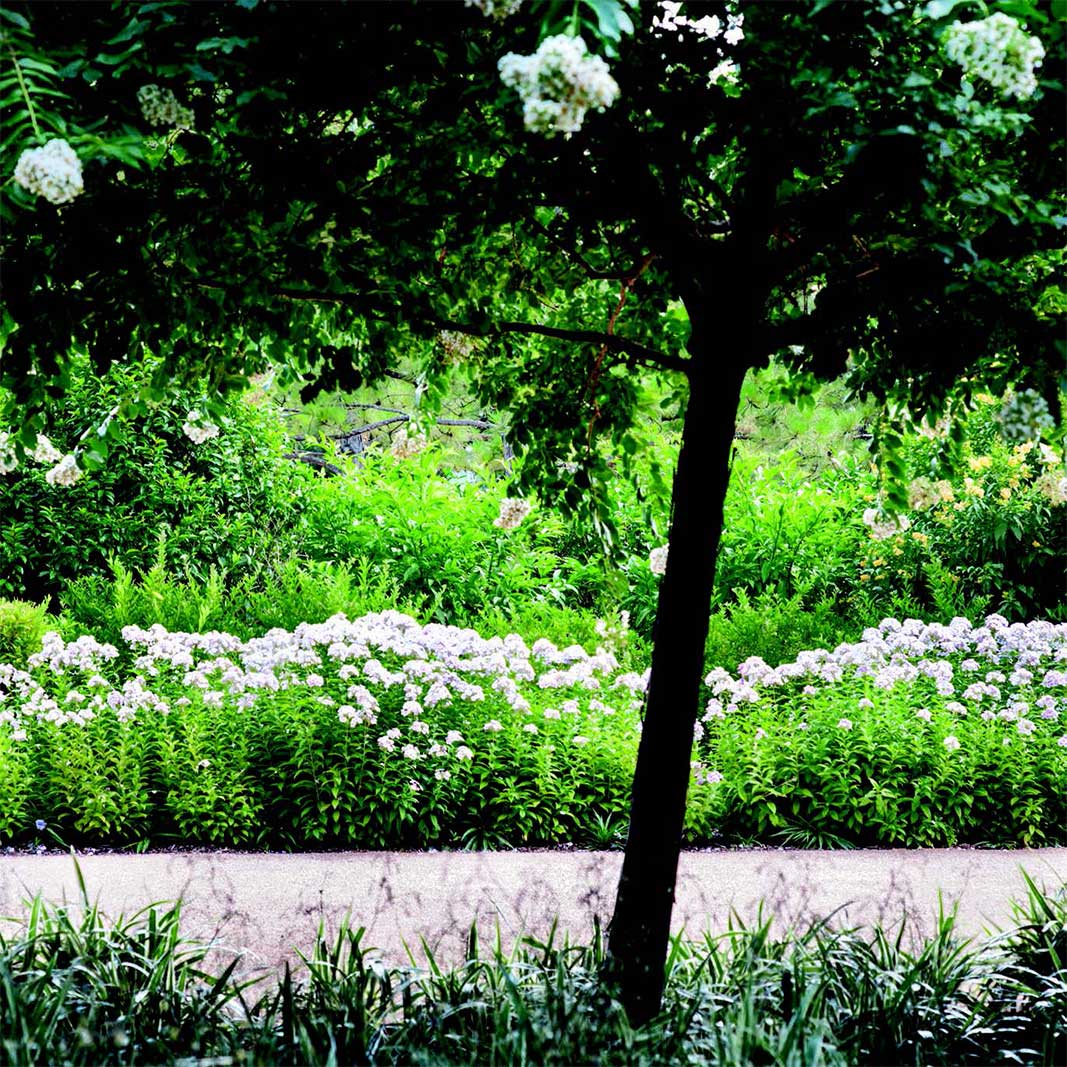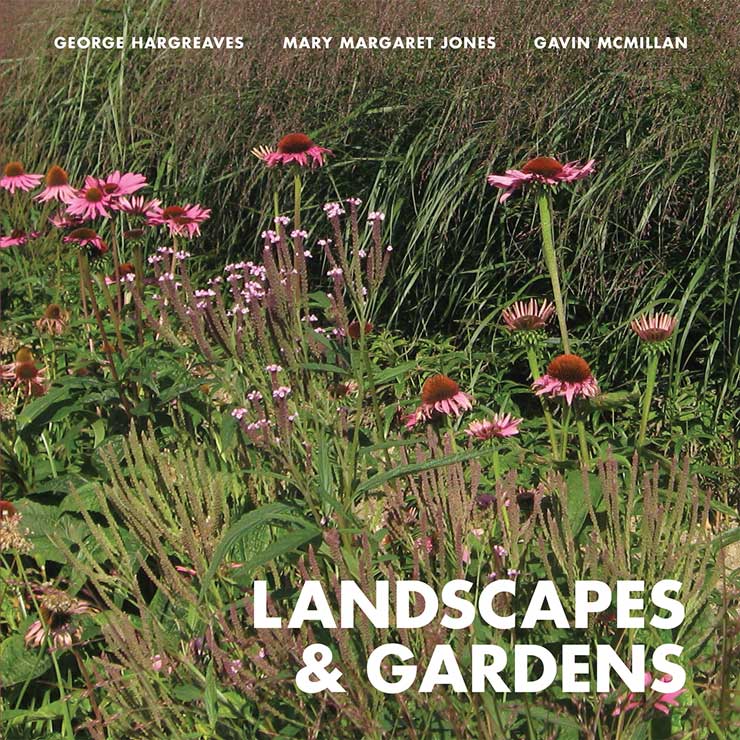
Landscapes & Gardens
George Hargreaves, Mary Margaret Jones, and Gavin McMillan
ORO Editions | 2015
“Landscapes & Gardens explores how to create meaning through dynamic, interactive, and exultant landscape. Whether elementally reductive or rich, highly programmed or passive, culturally interpretive or teeming with the phenomena of nature’s own systems, the built landscapes of Hargreaves Associates seek the power of connection to our day-to-day lives.
This volume celebrates these themes in the work of renowned landscape architect George Hargreaves and the firm he established.”
ORO Editions
“‘Gardens, parks, landscapes – these diverse scales and intensities of cultured nature all play important roles in our lives. This small collection is a provocative visual reminder of the enduring design potential of landscape space as public space,’ writes Julia Czerniak, ASLA, professor of architecture at Syracuse University, in the introduction to Hargreaves Associates’ Landscapes & Gardens, a small but rich landscape architecture monograph on the work of Hargreaves Associates.”
Jared Green, The Dirt
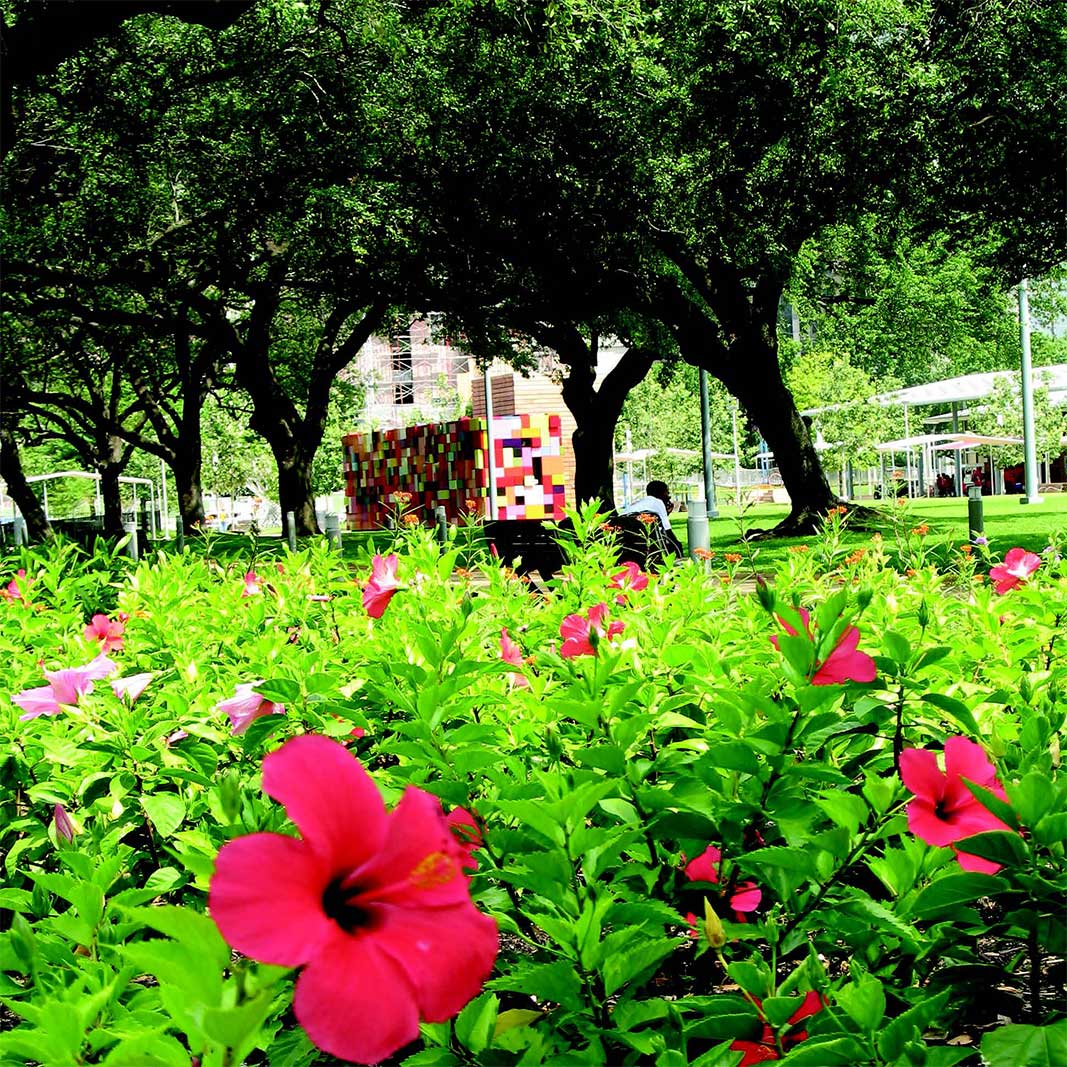
Preface
Julia Czerniak
Gardens, parks, landscapes – these diverse scales and intensities of cultured nature all play important roles in our lives. This small collection is a provocative visual reminder of the enduring design potential of landscape space as public space.
Public gardens are tremendous assets. They act as treasured neighborhood gathering places, as cultural artifacts that reflect contemporary aesthetic concerns, and they foster appreciation for and knowledge for all things botanical: plant appearance, performance, behavior, care, and property – from the economic to the edible. Well-designed gardens reflect global concerns such as the role of biodiversity in the health of the planet and, more importantly, inspire public action on its behalf. Moreover, whereas parks are often mistakenly read as remnants of larger natural landscapes, gardens in their artifice conjure up loftier thoughts of publicness: of community, cultivation, self-sufficiency, and even democratic space where one sets aside differences in order to achieve common goals.
Hargreaves Associates remains committed to what they refer to as “unprogrammed space” – the innovative design of gardens, parks, and urban landscapes that are free from the extensive range of activities that support the city. As this collection argues and the projects demonstrate, landscape space is advanced as green space, characterized by form and process and articulated by a diverse range of trees, plants, and grasses, with paths to move on and places to sit. It is a valued and valuable program in its own right and, the designers argue, is what attracts people to the same public space again and again.
Not every garden, however, has such power to attract. Design matters. The design premises the following projects employ offer glimpses into many of the larger themes that have consistently produced the firm’s successful work; a firm with an international reputation for its advanced design, technical expertise, public engagement, and the ability to get projects built in the context of complex politics and tough economics. These strategies, across scale, foreground connectivity, impassioned use, strong identity, and design innovation.
What follows is a more specific set of ideas – four organizational strategies (striations, walls, islands, and ribbons) and three themes (natives, rain, background/foreground) – that clearly articulates the design premises used to produce and exacerbate the immersive sensory experiences that are essential to enjoying, valuing, and measuring these types of landscape spaces. Circulation is one such measure. More than just movement corridors, these diverse organizations – generated through a nuanced reading of the site – create physical visual, and site-specific relationships at nested scales between the body and the city and act as important supports for public life. Furthermore, these designs potently acknowledge the difference, by choices of edge conditions and plant robustness, between a public body and a private one.
The built work of Hargreaves Associates has the agency to accelerate positive change in the contexts in which they are located. It is optimistic that we- amidst the demands of the market and private development – consider these quiet green landscape spaces as part of this agency. It is even more noteworthy that we continue to value their design excellence as beautifully advanced here.
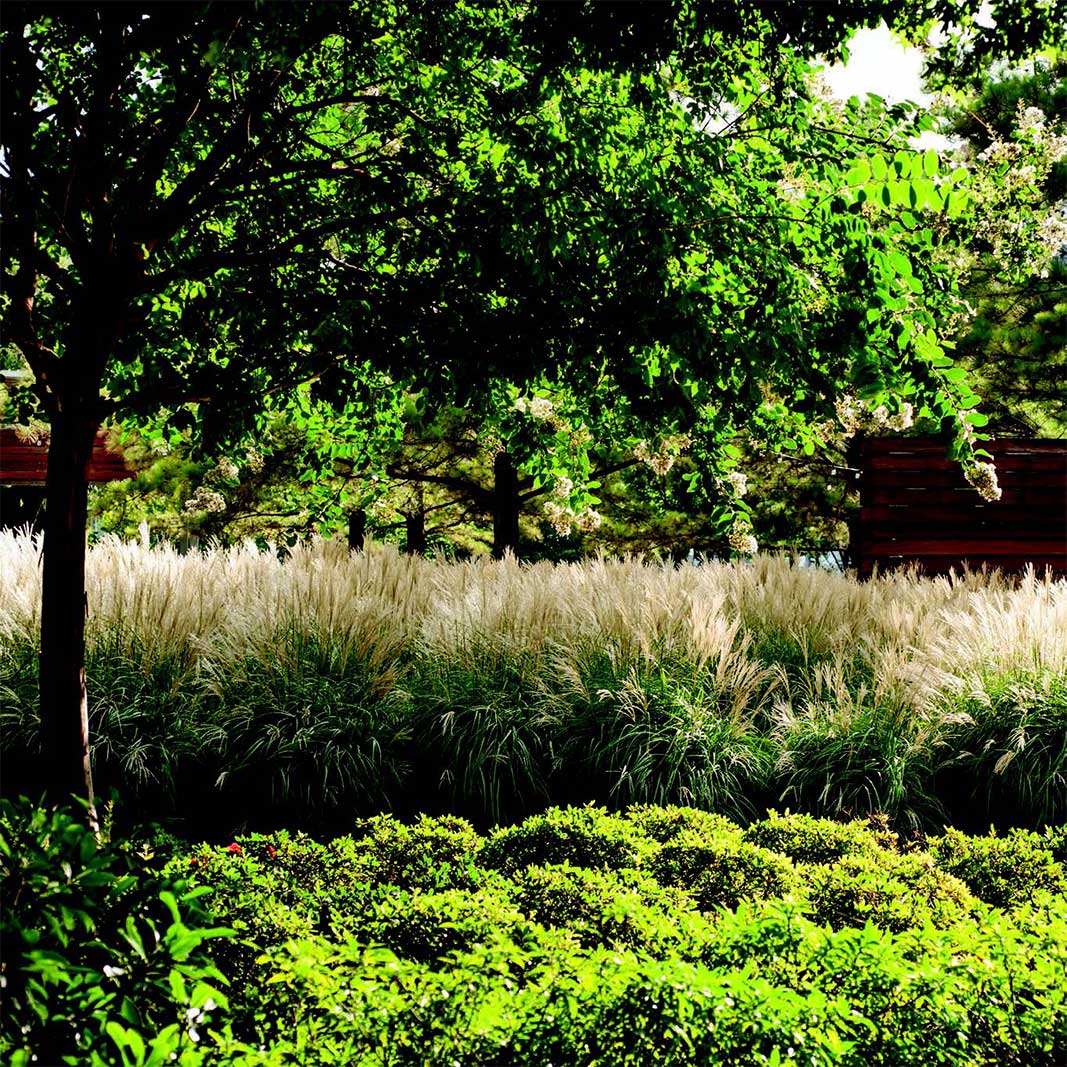
Introduction
George Hargreaves
This little book is about landscapes and gardens in public spaces.
Public spaces are expressions of a culture’s desire for common space, and most often the wish is for that space to be green. However, in today’s world, public spaces are less and less likely to be created by public entities, and even in cases where they are, the maintenance required may suffer from funding cutbacks. In some cases private developers may be required to create public space as part of planning approvals. In others, a private group may form a nonprofit corporation for park development (or that private group may join a public entity to create a bonding capacity to raise funds for public space development). In any of these cases, the most frequently asked question is “How can the park pay for itself?” The truth is that parks cannot pay for all of their operating needs, buy they can pay for some. On average we see around 25-35% as the highest amount of revenue a park can contribute to its own maintenance regime. This income is generated by park activities such as festivals, concerts and performances, corporate events, birthday parties and weddings, sporting activities, and food service – activities that require large areas of paving and other infrastructure that is often counter to the public’s desire for green parks.
Based on the public input we have received in the many locales we have worked, we believe landscape is still the primary motive for public open space regardless of the varying programs and their intensities. So what does this say about the relationship between landscape and activities that produce revenue? Are they exclusive of one another? Is there a point at which the park or public space becomes more fairground than park? We believe the answers lie in the strength and robustness of the designed landscape. A successful park has loyal followers – people who identify a park with their culture, their region, their city, and their daily lives. This identification may be due to a particular activity in the park, but more often is it due to the gestalt of the overall park experience – said another way, the look and feel of the park. Landscape(s) can inspire through their visual qualities, tactile qualities, and contrasting or unifying qualities. They can inspire through their sustainability or their habitat creation, and they can inspire by providing human interaction with plants and wildlife. Through time it is the landscape that is remembered and privileged much more than income-producing programming. If we can produce landscapes for public spaces that embody these inspiration qualities, it will not matter when the programmed activities evolve, disappear (such as the 2012 Olympic games), or increase. History has shown us that, if it is done richly and robustly, a landscape can last for hundreds of years.
Embedded within the public’s desire for green parks is a desire for gardens. Rich in semiology, gardens can be viewed as natural, agricultural, or cultural. Successfully placing any of these garden types in an urban context is quite different from the creation of private gardens for residences, states, and other private settings. Public gardens cannot be fragile in their design or placement. Like the landscapes they inhabit, public gardens must be robust. They will not receive personalized maintenance, nor can they be subject to the overrunning pedestrian flows of large events or major gatherings. In addition to the selection of hardy plants and protection by slight grade separations or low barriers, the design of these gardens should be bold and somewhat simple, while retaining the very qualities that we enjoy so much – constant and changing colors, differing plant structures, and textures that change with the seasons or that carry the garden through winter. Gardens can inspire, provide refreshment, incite joy, or simply provide a provocative landscape context; as John Dixon Hunt wrote in regard to the landscape, “The garden is the highest aspiration of our culture.”
The landscapes and gardens included here provide examples of different ways that this difficult balance of robustness and richness can be achieved in urban gardens set within public parks. Different design premises are employed that respond to the specifics of the context, be they structural, physical, or environmental, and form the book’s chapters: Striations, Wall, Islands, Ribbons, Natives, Rain, and Background Foreground.
We hope you enjoy this little book.
